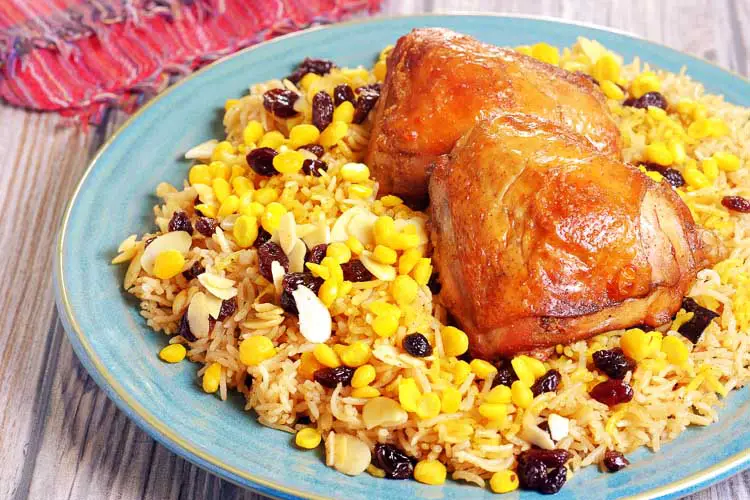Maqbous is a chicken and rice dish packed with a legion of spices and a sweet rosewater-raisin tang that hails from Oman in the south-eastern corner of the Arabian peninsula. It’s a close cousin of the Saudi kabsa, the Yemeni mandi, and the Indian biryani and reminds us a lot of Gambian benachin.
Oman is one of the Middle East’s lesser-known food hubs, with a remarkably diverse cuisine. On the Omani menu is a fusion of influences from its Arabian, Persian, African and Levantine neighbors as well as from further flung places like India. Dishes like the spice-packed maqbous are an excellent example of its eclectic influences and its position as a central player in the global Spice Trade.

MAQBOUS, MUSCAT AND A STOP ALONG THE SPICE ROUTE
With 82% of the country covered by desert, it should come as no surprise to discover that not much grows in Oman. The majority of the ancient population there – particularly the bedouins – subsisted on little more than dates and camel milk, supplemented by the rare serving of meat or fish for those close to the sea.
The search for ingredients impossible to cultivate on their home territory might have been one of the reasons that Arab merchants set sail for the East. The sea lanes, known as the Spice Routes, that arose gave rise to charmed ports like Oman’s capital Muscat. Positioned on the corner of the Arabian Peninsula and at the mouth of the Gulf of Oman leading into the Persian Gulf, Muscat was a key city in the exchange of inter-continental goods, foods and spices.
The presence of Arab ships along the Spice Routes reached their zenith with the rise of Islam and the Arab Empire from the 7th century onwards. The Arabs were particularly good long-distance traders who were adaptable to political change. They were known to sail frequently between Muscat and India (which is how a plethora of Indian spices got into the Omani pantry) as well as East Asia, the Middle East and East Africa.
OMAN’S SOVEREIGNTY BITES BACK
Muscat was invaded and sacked by the Portuguese, who remained the major trading power in the Gulf area from 1507 until 1650. When the Omanis ejected them from Muscat, they continued to chase the Portuguese out of their territories all the way down the East African coast as far down as Mozambique. Where the Portuguese vacated the Omanis stepped in, and these new lands became part of the growing catalog of Omani trade destinations.
One of the Portuguese empire’s key assets was the island of Zanzibar, which had served a valuable slave trading post. Stone Town actually became the capital of the Omani Empire from 1840 to 1856. Zanzibar continued to exert a lot of influence over its rulers even beyond its 1965 independence, and it’s become a prime source of cloves, one of Oman’s more conspicuous spices.
You May Also Like…
If you love rice dishes, you should also check out our other Peruvian fried rice with a Cantonese flair, or a Jordanian rice pilaf with lamb and yogurt sauce (mansaf with jameed).
Feel like eating your rice plain? Try our Korean Bibambap vegan with tofu and vegetables, or Korean Beef Bulgogi served with white rice.
Love chicken thighs? Try our saffron rice with marinated chicken thighs.
CAN’T STAND THE HEAT? MAKE A KITCHEN
In a country where summer temperatures can go as high as 122ºF, you’d think it might be enough to just leave food outside to cook itself… and you wouldn’t be far wrong. The Omani traders were forced to innovate various methods for preserving food stuffs that came in and out of their ports. These food items needed to survive the long voyages by sea or the hot, arid desert caravans.
Coconut milk from East Africa was powdered, and the limes that arrived from Malaysia were left out to shrivel in the sun until their cores blackened, creating a whole new ingredient called black limes. Fresh local fish were salted and preserved, and dates were dried. These blackened, dried, powdered ingredients still feature heavily in Oman’s cooking today.
Another great natural cooking resource in Oman is the ground itself. For a special occasion, it’s entirely par for the course for an Omani cook to dig a hole in the ground to construct an underground oven in order to slow cook a delicious cut of lamb. Usually, a fire is lit at the bottom of the pit, then the embers are either removed or pushed to one side. The meat is wrapped in dried banana or palm leaves, placed in the pit, covered and left to cook for up to 48 hours. The resulting roast is paired with a bowl of spiced basmati rice and served as the festive Shuwa.
In neighboring Yemen, the underground cooking method is also used for preparing the meat for mandi, Yemen’s answer to maqbous. And while we will applaud any of our readers who attempt to execute this method in their backyards, we ourselves will be pan-cooking our chicken for this particular maqbous.
ABOUT THE RECIPE
We think that the best way to approach making a maqbous is to consider the chicken and rice to be a canvas for the myriad spices set to infuse it. The spices really are the star of this dish, though like with other Omani dishes, the maqbous is not spicy hot since chillis are not really used. All the spice with none of the heat is good by us!
The two most important elements in getting the maqbous right are perfecting the cooking of the chicken and the rice so that the chicken is crispy and the rice is light and fluffy. We’ve included our fail-proof rice cooking method below to ensure maximum fluffiness.
Our maqbous recipe calls for chicken, but if you’re feeling adventurous, you might want to substitute for native Cornish game hens, which will give a much richer flavor to the stock as well. And remember to start ahead of time, as your chicken or hen will need to marinate for at least four hours before you start cooking!
Another ingredient we’d love to use is the indigenous black lime, but this is hard to source, and even harder to make unless you’re in summertime Arizona, so we replaced it in our recipe with lime powder.
MARINATING THE CHICKEN
Prepare your chicken pieces and weigh out all the spices. One thing to remember when weighing out spices is that ready-ground and whole spices have different weights. This is an important distinction since it can produce a huge imbalance in the flavors of your dish. So if you are grinding your own spices, you can use these conversions as a guide.
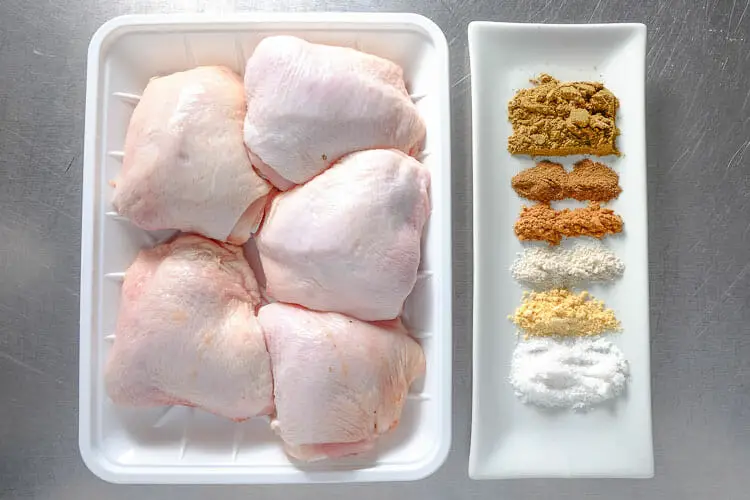
Mix all the marinating spices together in a bowl and spread them all over the chicken, making sure all the pieces are evenly covered. Then cover the bowl and place in the fridge for at least four hours.
This would also be a good moment to rinse your Chana Dal and leave it to soak in a bowl at room temperature.

COOKING THE CHICKEN
Combine the white onion, garlic, ginger, and olive oil in a food processor (on Amazon). Pulse the mixture into a smooth paste.
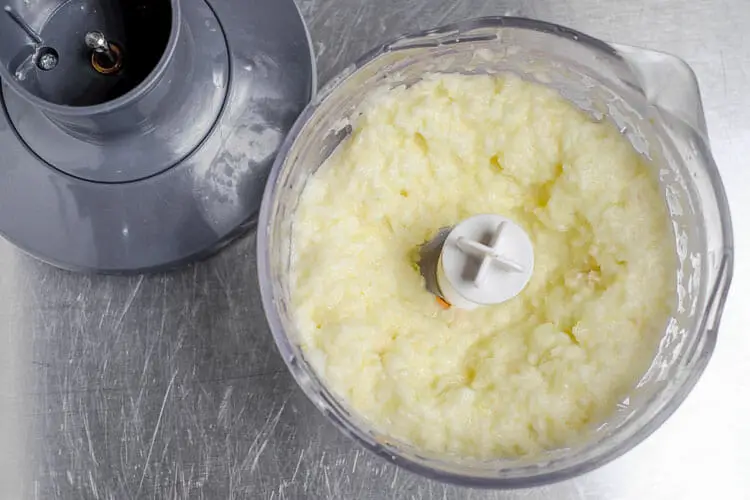
The next step is to roast the onion mixture in a braising pan for about 3-5 minutes. Since there’s already oil in the mixture, there’s no need to add more, but do keep stirring as the paste could burn very easily at this stage.
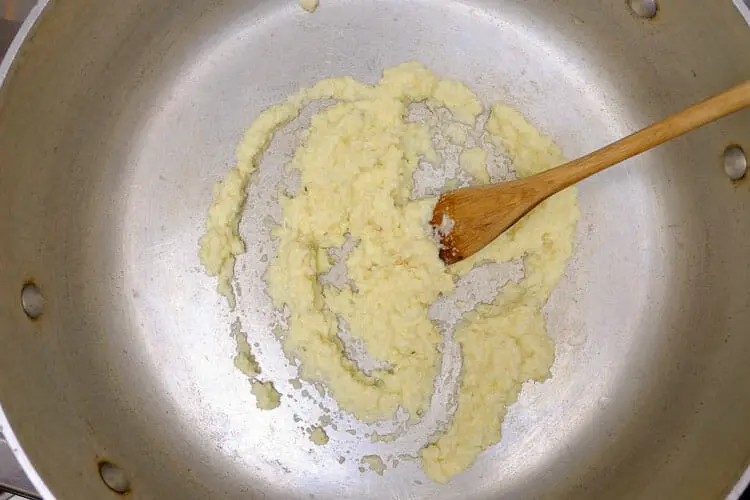
Add the cloves, cinnamon, bay leaf, and cardamom pods into the pan and roast for two more minutes until everything is sizzling nicely. You should already be smelling the aromas.

Add the chicken and sear for a minute on each side. This is a crucial step in locking in the flavors of the meat.
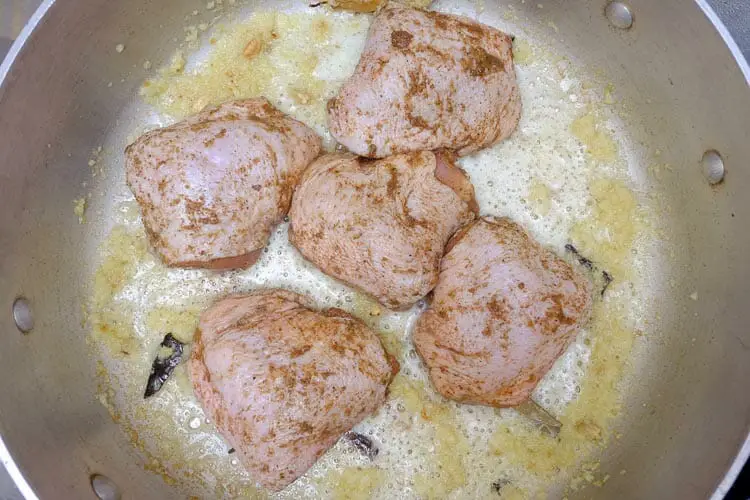
Now add just enough stock to cover the chicken pieces about two-thirds to the top. Bring the stock to a boil, then cover and simmer for 20 minutes.

When the chicken is done, strain it out of the stock (which you’re keeping for the rice) and arrange on a colander or cooling rack to air-dry for at least 30 minutes. Sprinkle some salt on the chicken skins to draw out any excess moisture.
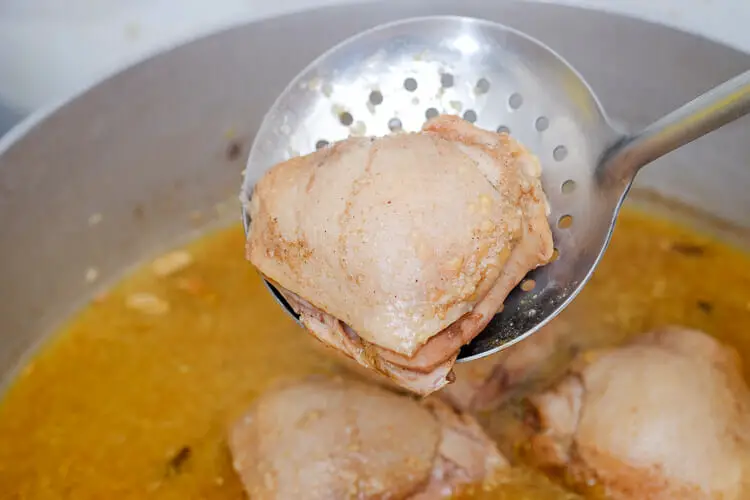
COOKING THE RICE
Maqbous rice is rice with a twist. You might never be able to eat plain rice in the same way again. Prepare all your ingredients for the rice.
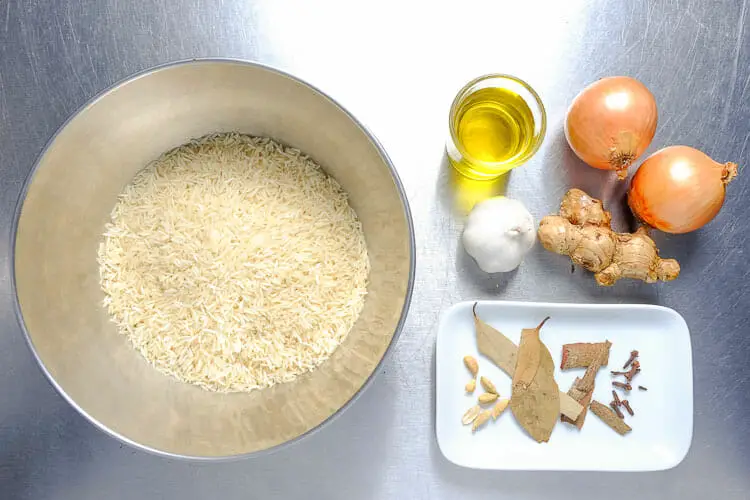
Put the basmati rice in a large bowl and place under cold running water until the water starts to run clear. Fill up the bowl with water and allow the rice to soak for 15 minutes.
While you’re waiting, put the chana dal to boil. It should take about 45 minutes to get it to just the right amount of al dente.
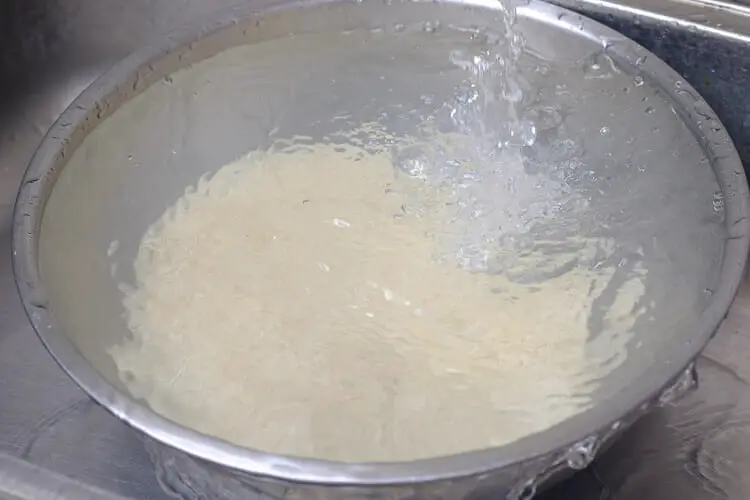
Drain the water with a colander and now let the rice sit and air-dry for around 10 minutes.
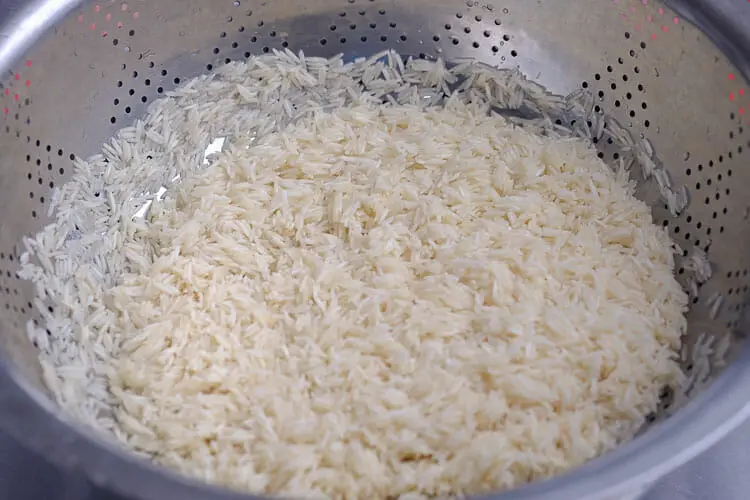
Heat a tablespoon of olive oil in the braising pot and gently stir in the rice, making sure that all of the grains are evenly coated with the oil.
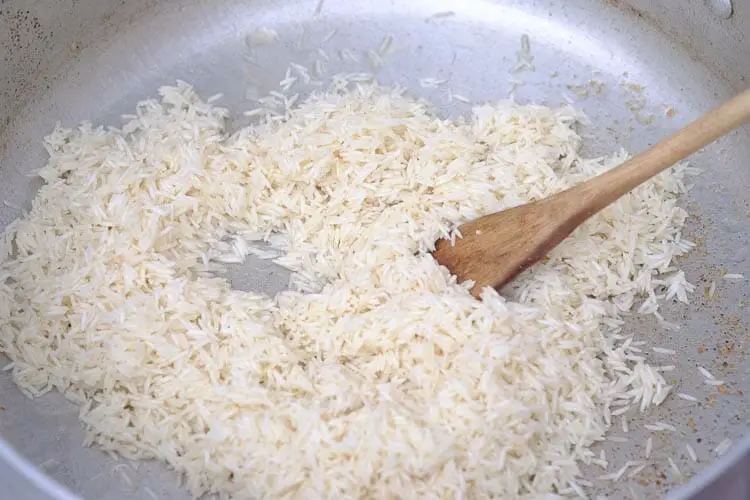
Ladle in exactly four cups of the stock in which you cooked the chicken.
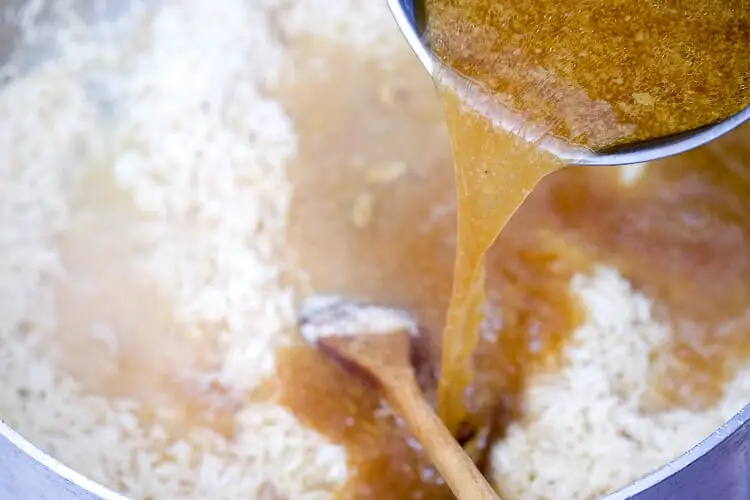
Bring to a boil, put the lid on and allow to simmer for 18 minutes over the lowest possible heat setting. After 18 minutes, turn the heat off, but leave the lid on for another 10 minutes to allow for all of the steam and moisture to be absorbed into the rice. Then remove the lid and fluff it up.
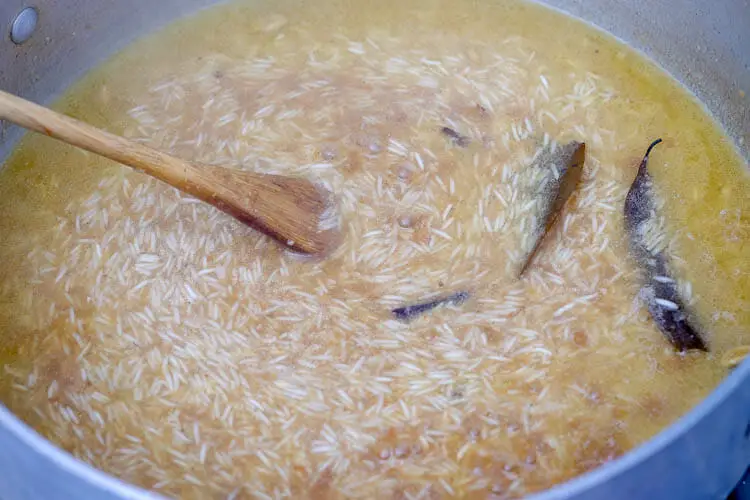
FINISHING THE MAQBOUS
Prepare your ingredients for the Maqbous topping.
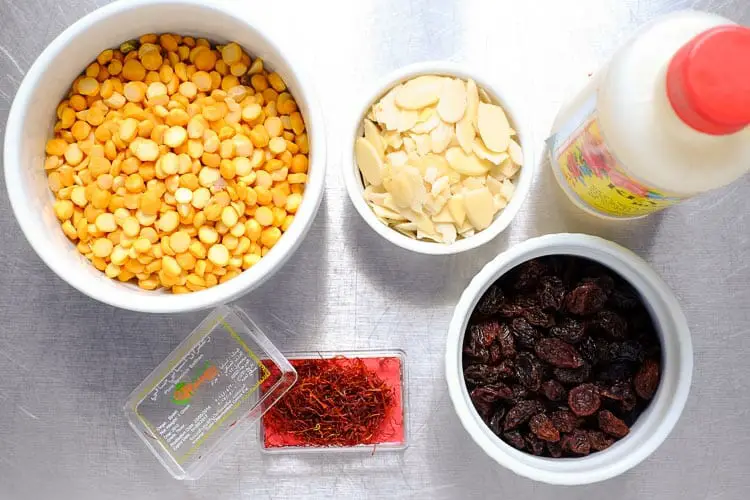
Arrange the chicken pieces on a baking sheet on a baking tray and brush with olive oil. Broil for 10-15 minutes at 425ºF.
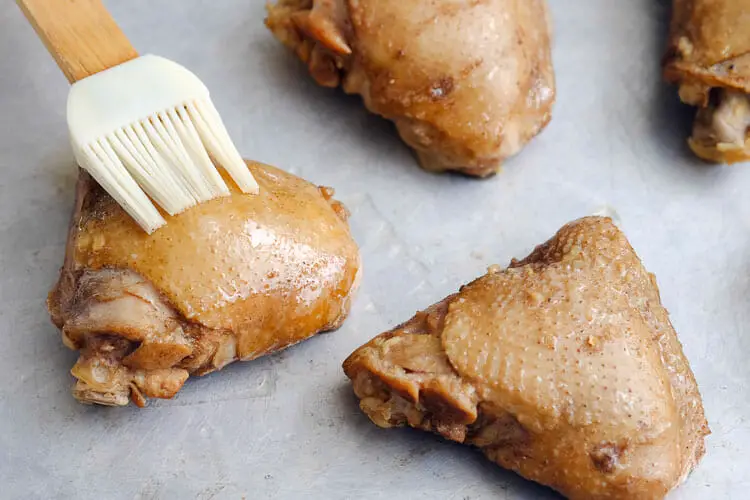
Soak the raisins in the rose water for 5-10 minutes, then drain. This helps to reconstitute them and adds a lovely perfumed sweet flavor to the maqbous.
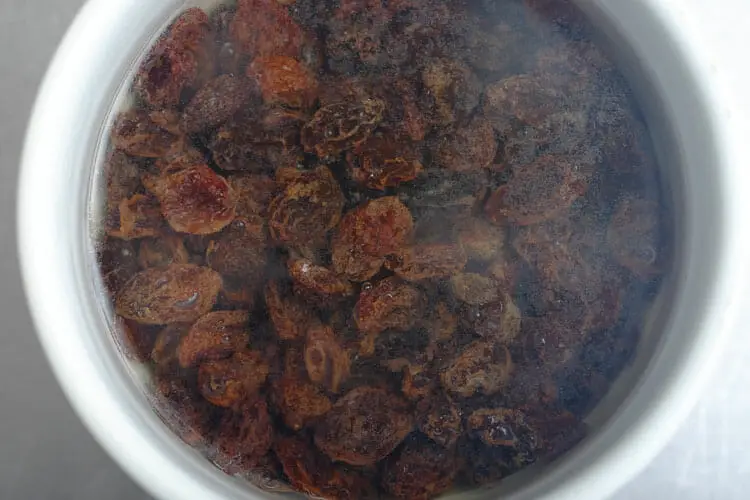
Do the same with a pinch of saffron threads.

Heat up a tablespoon of olive oil in a pan and sautee the raisins and almonds for 2-3 minutes. The raisins should puff up. Set them aside.
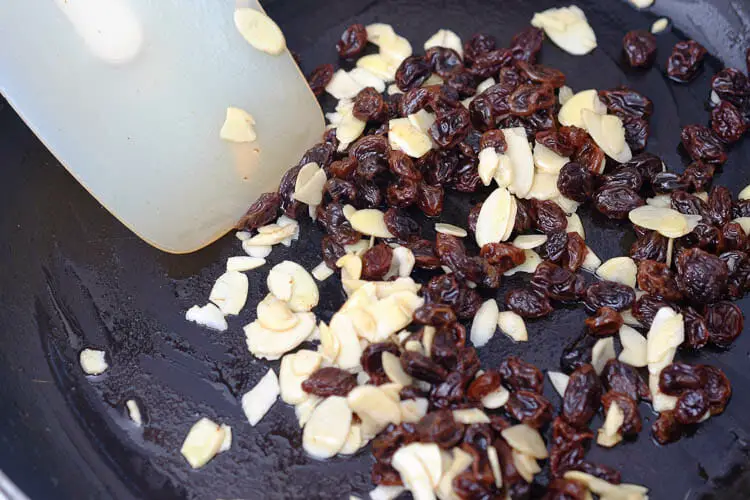
In the same pan, sauté the cooked chana dal, adding a tablespoon of the saffron-infused water. When they are beginning to brown, take them off the heat and set them aside.
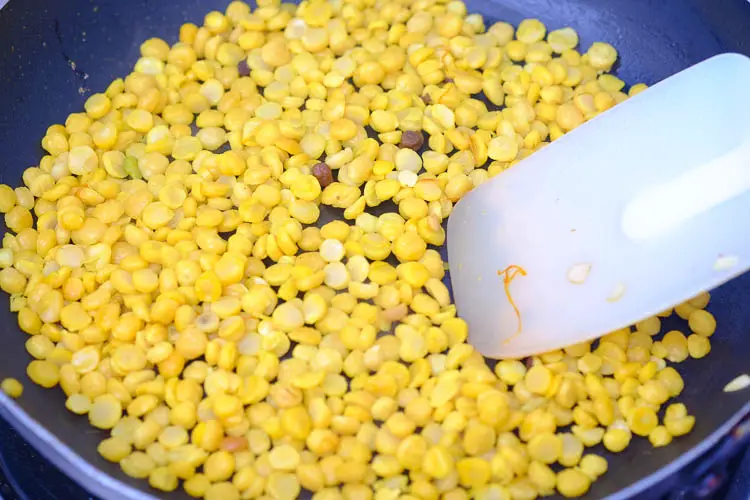
Now pour the remaining saffron water into half of the basmati rice. This should give it a nice yellow tint.
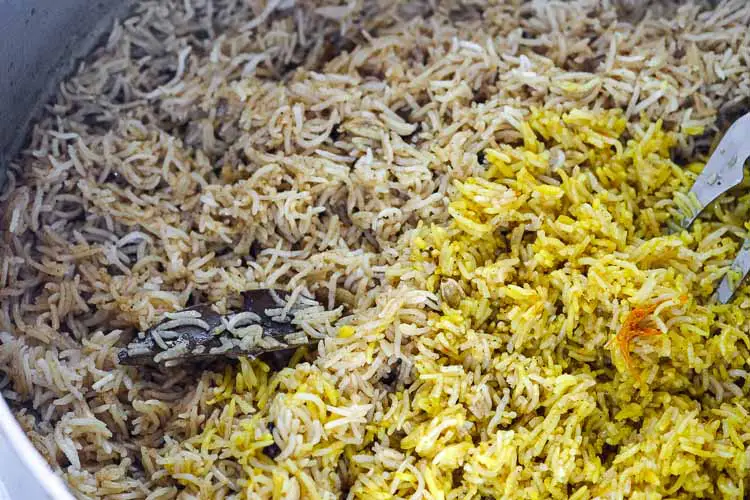
Top the rice with the dal, raisins and almonds, and finally the chicken pieces. You might want to make individual portions to serve like this to maximize prettiness.
Now get ready for a taste sensation, and see if you can name all the spices in your maqbous. For a true Omani end to your meal, brew up a pot of cardamom-infused coffee.

OUR TAKE ON THE RECIPE
We loved the complexity of flavors in the maqbous: cinnamon, cardamom, rose water and ginger combined with the various textures of the rice, raisins, almonds and chicken just hit our palate at every level.
Our source recipe called for boiling the chicken in the pot, but we preferred our chicken to be crispy, so we seared it first in order that it crisp up better during the final broiling phase. When we braised it, we did not fully submerge the chicken in the pan, which also helped keep it crispy at the end. And another tip for optimum crispiness is to salt and air-dry the chicken prior to cooking.
Getting the rice perfect can also be a tricky feat, but there are several hacks we know of for keeping the grains fluffy. The first is to rinse the rice well to remove any excess starch that might cause the grains to stick together. Air-drying the rice after rinsing also helps to toughen up the grains for cooking, since soaking them does make them more swollen and fragile.
Heating the rice grains evenly in oil prior to boiling also helps them to swell and consequently absorb more moisture. This will ensure that they cook perfectly tender, while keeping the lid on for an extra 10 minutes after cooking allows the rice to absorb all the steam in the pot.
As we mentioned before, we think Cornish game hens would give more flavor to the stock and to the dish of course. Also, the very same methods would work for any kind of meat or poultry. A lamb version of maqbous would definitely be more flavorful.
Bil-hanā’ wa ash-shifā: may your meal be had with gladness and health!
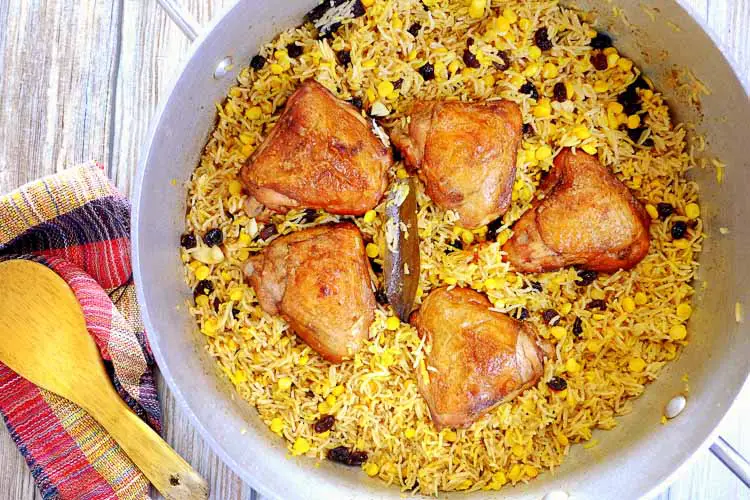


Omani Maqbous
- Total Time: 1 hour 30 minutes
Ingredients
For the Chicken and Spice Marinade
- 5 chicken thighs (approximately 1 lb)
- 1/2 teaspoon Allspice powder
- 1/2 teaspoon nutmeg powder
- 1 teaspoon ground white pepper
- 1 teaspoon lime powder
- 1 tablespoon salt
For the Rice and Braising Stock
- 2 cups Basmati rice
- 4 cups chicken stock
- 6 pieces cloves
- 2 sticks cinnamon
- 2 pieces bay leaf
- 6 pods green cardamom
- 2 pieces white onion, roughly chopped
- 1 2″-piece ginger, thinly sliced
- 6 cloves garlic, crushed
- 3 tablespoons olive oil
For the Toppings
- 1/4 cup raisins
- 1/4 cup slivered almonds
- 1/2 cup chana dal, boiled
- a pinch of saffron
- 1/2 cup rose water
Instructions
Stage 1: Marinating the chicken
- Start by combining all the spices for the marinade in a bowl.
- Place your chicken thighs in the bowl and coat them evenly in the spice mix. Once they’re coated, cover the bowl and let it marinate for at least four hours in the refrigerator.
- At this point, rinse the chana dal and leave to soak in a bowl.
Stage 2: Cooking the chicken
- Combine your white onion, garlic, ginger, and olive oil in a food processor (on Amazon), and pulse it into a smooth, non-clumpy paste.
- Roast this paste in a braising pan over medium heat for 3-5 minutes. Be sure to stir constantly to keep it from burning.
- Add your cloves, cinnamon, bay leaf, and cardamom pods into the pan and roast for 2 more minutes, still stirring constantly.
- Next up, add in your marinated chicken thighs and sear for about a minute on each side.
- Pour in just enough chicken stock to cover the chicken about 2/3 to the top.
- Raise your stovetop heat to bring the stock to a boil, and then cover the pot with a lid and braise on a simmering heat for 20 minutes.
- When the chicken is done, pull them out of the stock (which you’ll save for the rice) and set them on a colander or cooling rack to air-dry for at least 30 minutes. Sprinkle some salt on the chicken skins to draw out any excess moisture.
Stage 3: Cooking the Rice
- Put the basmati rice in a large bowl and rinse it under a cold running tap until the water runs clear.
- Next, soak the rice in water for 15 minutes and let it sit.
- As your rice sits, drain your chana dal and place it into a pot, then cook it on a simmering heat for about 45 minutes after bringing the water to an initial boil.
- Returning to the rice, drain your bowl and allow the rice to air-dry for 10 minutes.
- Place your braising pot back on the stovetop and heat a tablespoon of olive oil. Stir in the rice, coating the grains evenly with oil.
- Ladle in 4 cups of the cooking stock, including the whole spices.
- Bring the stock to a boil, put the lid on, and then cook for 18 minutes over the lowest possible heat setting.
- After 18 minutes, turn off the stovetop heat and keep the lid on for another 10 minutes.
- After 10 minutes, take off the lid and fluff the rice gently with a meat fork.
- Soon thereafter, your dal should be fully cooked, so take it off the heat and set aside.
Stage 4: Finishing and Assembling your Maqbous
- Preheat your oven broiler to 425 degrees Fahrenheit (~220 Celcius)
- Arrange the chicken pieces on a baking sheet and brush with olive oil, then broil for 10-15 minutes.
- As your chicken broils, soak the raisins in rose water for 5-10 minutes, then drain.
- Next, soak a pinch of saffron threads in warm water for 5- 10 minutes.
- Take a pan and heat it over medium-high heat then add a tablespoon of olive oil.
- Sauté your raisins and almonds for 2-3 minutes. The raisins should puff up. Once they have, take them off the heat and set aside.
- In the same pan, sauté your cooked chana dal, adding a tablespoon of the saffron-infused water, then set aside.
- Tint about half of the cooked basmati rice with the rest of your saffron-infused water.
- Finally, top the basmati rice with dal, raisins, almonds, and the chicken pieces, and enjoy!
- Prep Time: 30 min
- Cook Time: 1 hour
